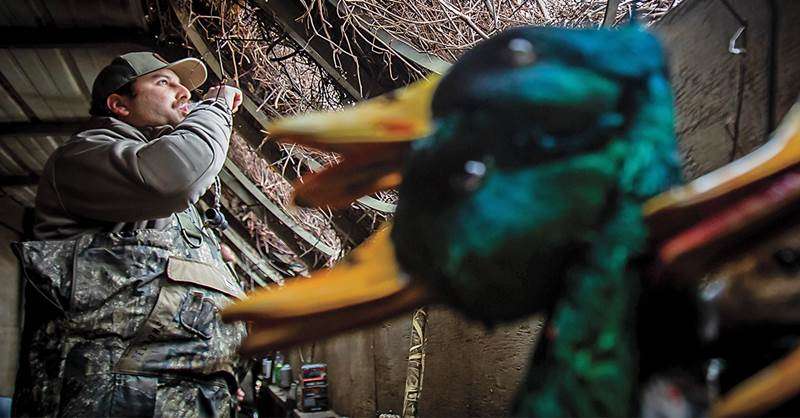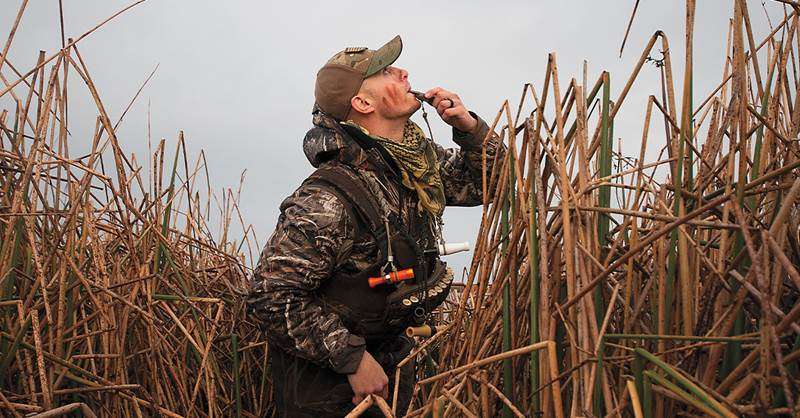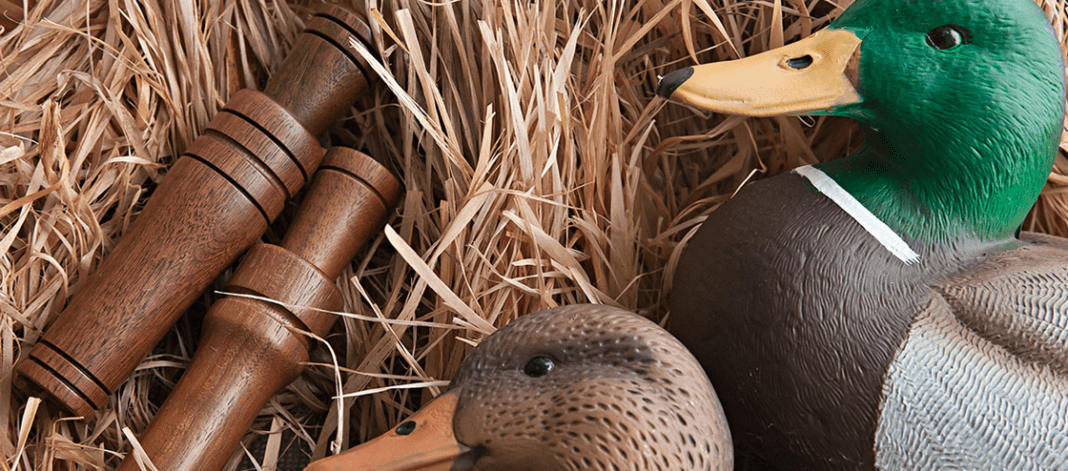What you must know about Duck Calling Accents. Hunters in some of the country’s most famous waterfowl hunting areas have developed their own special techniques for communicating with ducks. Do you want to learn the ducks language? If yes, then draw closer for explanation.
I’m from the South, born and raised here. My wife, on the other hand, hails from the North. She’s been adjusting to life down here, and she’s starting to appreciate our Southern ways. She used to tease me about my accent, but funny enough, I’ve noticed her picking up some Southern phrases lately. She even says “y’all” now and then. It sounded a bit strange at first, but now I think it adds a touch of elegance to her speech.
You can often tell where someone’s from by how they talk. If you’ve been lucky enough to hunt in different parts of the country, you might have noticed that waterfowlers have their own unique ways of calling ducks. Regional differences play a big role in calling styles. It’s like duck callers have their own accents, depending on where they’re from.
People who hunt in the Arkansas woods call ducks differently than those who go after them in the salt marshes of the East Coast. These variations come from years of hunting in different landscapes and the diverse waterfowl traditions stretching from California to Maine.
Here’s a look at five of the country’s most unique regional duck calling styles, explained by those who are experts in them. Meanwhile, you can pick any of the Best Affordable Duck Calls to Buy Right Now at Amazon for hunting.
1. Region: Reelfoot Lake
Howard Harlan
Duck Calling style: Reelfoot Highballs

The greater Reelfoot Lake area in northwest Tennessee, despite its small size compared to other waterfowling regions, has had a significant influence on duck calling. This unique lake, formed by earthquakes in the 1800s, is a winter haven for ducks and is known for the highball call.
The development of modern duck calls can be traced to this region, particularly from southern Illinois to west Tennessee, with Reelfoot Lake at its center. Renowned call makers like Victor Glodo and Johnny Marsh were pioneers in the duck call industry. In the early to mid-20th century, they created big-barreled metal reed calls that provided them with a competitive advantage. These loud, high-pitched calls became the preferred tools for traditional Reelfoot callers.
“The Reelfoot calling style is unique because it combines highballs,” explains game-call historian, author, and collector Howard Harlan. “This call doesn’t exactly sound like a duck, but it’s effective. We use this technique to call to high-flying ducks, but we also use it to bring a duck right to the blind. Some people do use plastic-reed calls, but the metal reeds produce a ringing sound like a tuning fork.
“I’ve always believed that a high-pitched call needs to be sharp and not flat,” Harlan continues. “The person who can hit a note the sharpest will attract more ducks, especially on windy days. When there’s a section of the lake with many blinds all using the ringing highball, it’s captivating to passing waterfowl. It’s a large group making a powerful sound.
“Calling in the early season is often different from calling in the late season,” he explains further. “Early on, you encounter a lot of younger, more responsive ducks. Because of this, they are usually the first to be harvested. Later in the season, you have to put in more effort to convince ducks to descend because they’ve heard calling throughout their migration route.”
Region: Louisiana
Rod Haydel
Duck Calling Style: The Cajun Squeal

In the difference to the hammer-like Reelfoot style, the Louisiana style of duck calling is more like a precise scalpel. Rod Haydel, president of Haydel’s Game Calls, hails from a family with a long history of making duck calls and hunting the bayous of Louisiana. He explains that Louisiana’s unique waterfowling conditions have shaped this distinctive calling style.
Louisiana winters more ducks than any other region in the United States, which means hunters here encounter fewer high-flying migrating ducks. Therefore, Louisiana’s calling approach is subtle, relying on finesse with a lot of single, well-spaced quacks. While hail calls can be effective on flight days, Louisiana doesn’t witness the massive migrations seen in other parts of the flyway, and heavy calling isn’t typically necessary to elicit a response.
Haydel elaborates on the behavior of ducks in Louisiana. “Often, ducks will leave their feeding areas early in the morning to fly out to the Gulf of Mexico and rest on the water. Around midday, these ducks return to the marshes to feed. If you’re in the marsh when they return, your goal is to guide them toward your decoys, rather than disrupt their migration pattern.”
Louisiana hunters also add a touch of Cajun flair to their calling. “In the past, hunters made basic duck calls from cane,” Haydel explains. “When they blew a lot of air through these calls, they often produced a squeaking sound at the end of a note. This is how the Cajun squeal originated. The old-timers believed that ducks made this sound when they had a lot of grain in their throats. Today, this sound has become synonymous with the Louisiana calling style.
“Although it’s a popular sound in Louisiana, I’ve successfully used the Cajun squeal all over North America,” Haydel adds. “To make it, when I’m performing a single quack, I switch from blowing hot air from my diaphragm to blowing cold air through my lips midway through the note. I achieve this by pinching my lips down over the opening in the middle of the note, almost like I’m chewing on the end of the call. This change in air temperature alters the reed’s vibration and creates the unique sound of the Cajun squeal. It’s a highly effective technique.”
2. Region: Central Valley, California
Mickey Saso
Duck Calling style: West Coast Whistles

Mickey Saso, the founder of Wingsetter Calls and a member of the California Waterfowlers Hall of Fame, is known as a leading expert in calling whistling ducks. His expertise is rooted in California’s Central Valley, a haven for these ducks due to its extensive rice fields and wetlands.
Saso recommends using a combination of calling styles when dealing with mixed flocks of pintails and wigeon. He advises starting with a hail call when the ducks are far away. As they approach, mix in single hen quacks and feeding chuckles with whistles. Once the ducks are fully committed and circling, stop using the mallard call and rely solely on the whistle. Overusing mallard calls when the birds are close can often spook pintails.
To create the distinctive pintail sound with a whistle, flutter your tongue in two-note sequences at a moderate speed, similar to saying “tweet tweet” in a regular voice with a natural cadence. For wigeon calls, use a quick three-note laugh without any flutter. Wigeon calls are slightly higher-pitched than pintail calls, with an emphasis on the second note: “hee-HEE-hee.”
Saso also suggests mixing in some wigeon whistles with pintail whistles, even if wigeon aren’t present in the flock you’re calling. Whistles are considered finishing calls, and wigeon calls serve as confidence calls for pintails. Pintails are known to be challenging to deceive but are highly regarded among duck hunters.
3. Region: New England
Hank Garvey
Duck Calling style: Black duck basics

Hank Garvey, an experienced duck hunter from Newburyport, Massachusetts, has honed his skills for nearly five decades hunting along the Atlantic coastline, particularly for elusive black ducks.
Black ducks are known for their wariness and minimal vocalization. They don’t engage in a lot of noisy chatter. When they fly, you might hear a brief, soft quack, but they don’t engage in extended back-and-forth calls like mallard hens on the water. Instead, black ducks produce low, longer, and more drawn-out quacks.
Garvey prefers using a quieter duck call with a single reed and a clean tone. He finds single-reed calls more versatile and avoids raspy, nasal-sounding calls, as black ducks don’t typically make such sounds.
His primary hunting strategy involves extensive pre-hunt scouting to pinpoint the ducks’ intended locations. This approach minimizes the need to attract ducks from afar using unnatural calls. While he occasionally uses abbreviated hail calls when birds are turning away, he avoids excessive calling, especially since black ducks are extremely wary, and overcalling can deter them from returning.
4. Region: Arkansas
John Stephens
Duck Calling style: Arkansas timber calling

Stuttgart, Arkansas, is known as an epicenter of duck hunting, and John Stephens, president of Rich-N-Tone Calls and a three-time world duck calling champion, is a seasoned expert in the Arkansas style of calling.
Duck calling in Arkansas is deeply ingrained in the culture. Many local children start learning how to blow a duck call at a young age. In this region, calling is considered an essential part of duck hunting, often prioritized even more than setting up decoys. It’s seen as an art form.
The Arkansas style of calling is characterized by being highly vocal. With abundant public hunting and a significant duck population, competition is fierce, both among hunters and with live ducks on the water. Mallards congregating on the water in the timber create a distinctive echoing sound that draws ducks’ attention.
To compete effectively, hunters use calls with a raspy, loud, and bass-heavy sound, particularly when they’re far from the ducks. This noisy approach helps carry the sound over water and other terrain features, mimicking the natural environment and attracting ducks from a distance. As ducks get closer, the calling becomes more realistic, aiming to convince them to commit to the decoy spread.
While this approach might seem like excessive calling at times, it originated from the need to compete with the cacophony of live ducks in timber and the presence of many hunters in the area.
List of some Duck Calling Styles in Hunting Water Birds
There are various duck calling styles used by hunters to mimic different duck sounds and attract waterfowl. Some common duck calling styles include:
- Quacking: Imitating the classic quack sound made by female ducks.
- Feeding Chuckle: Mimicking the sound of ducks feeding on the water, which indicates a safe and relaxed environment.
- Greeting Call: Used to grab the attention of ducks and signal friendly intent.
- Hail Call: A loud and attention-grabbing call used to reach distant ducks.
- Lonesome Hen Call: Imitating the call of a single female duck to draw in nearby ducks.
- Comeback Call: Used to persuade ducks that are flying away to turn around and return.
- Pleading Call: A series of soft, pleading sounds to reassure ducks that it’s safe to land.
- Whistle Call: Mimicking the whistling sounds often made by pintail ducks.
These styles, along with different duck call types and techniques, are used by hunters to create realistic duck vocalizations and increase their chances of successful hunting.
Top 5 Duck Calling Accents for Hunting Birds
Duck calling accents, also known as regional variations, can add authenticity to a duck call’s sound. Different regions and hunters may have their own unique accents when calling ducks. Here are some duck calling accents or regional variations:
- Cajun Accent: It is often associated with Louisiana hunters, Cajun accents tend to produce distinct sounds when calling ducks.
- Midwest Accent: Hunters from the Midwest, such as those in the Great Lakes region, may have accents that influence their duck calling style.
- Southern Accent: Southern duck hunters may incorporate their regional accents into duck calls, producing unique sounds.
- Eastern Accent: Along the Eastern Seaboard, hunters may have their own variations in duck calling techniques and accents.
- Western Accent: Western states like California and Oregon may have distinct regional duck calling styles.
These accents can affect the tone, rhythm, and inflection of duck calls, making them sound different from one region to another. Duck hunters often adapt their calls to match the local duck vocalizations, which can vary by species and region.
Popular Types of Duck calling Whistles:
- Teal Whistle: This whistle is help to imitate the high-pitched, rapid calls of teal ducks. These whistles are ideal for teal hunting.
- Wigeon Whistle: This type of whistle is made to replicate the distinct sounds of wigeon ducks. It includes their whistles and chuckles.
- Pintail Whistle: Hunters use it to mimic the whistling sounds of pintail ducks. This whistle can be effective in attracting pintails to the decoy spread.
- Wood Duck Whistle: Wood duck whistles imitate the squealing or whistling sounds of wood ducks. They are usually used to attract them.
- Mallard Drake Whistle: This design to mimic the calls of male mallard ducks. Secondly, this whistle can be effective in drawing in mallards.
- Gadwall Whistle: Gadwall whistles replicate the sounds of gadwall ducks. It also includes their nasal quacks and whistles.
- Northern Pintail and Mallard Combo Whistle: Some whistles are versatile and can produce both pintail. They can also prouce mallard duck sounds. This makes them suitable for different hunting moments.
These whistles come in different shapes and sizes, each tailored to produce specific duck sounds. Duck hunters often carry a variety of whistles to match the species they’re targeting and the calls they want to mimic.
Related Posts to Duck Calling
- Top 7 Tactics for Calling Ducks When Hunting in the Woods for a Kill
- Eight Duck Calls Every Duck Hunter Must Master this Hunting Season
- How to Remove a Hickey in Seconds Using Toothpaste
- How to Effectively Increase your Brain Power to Boost Study
- 100 Best White NBA Players in Basket Ball History in Pictures
- Find Your Dream Job Here to Launch Your Career – Future starts
- How Many Grams is in a Pound? Converter Grams, Pounds & Ounce







